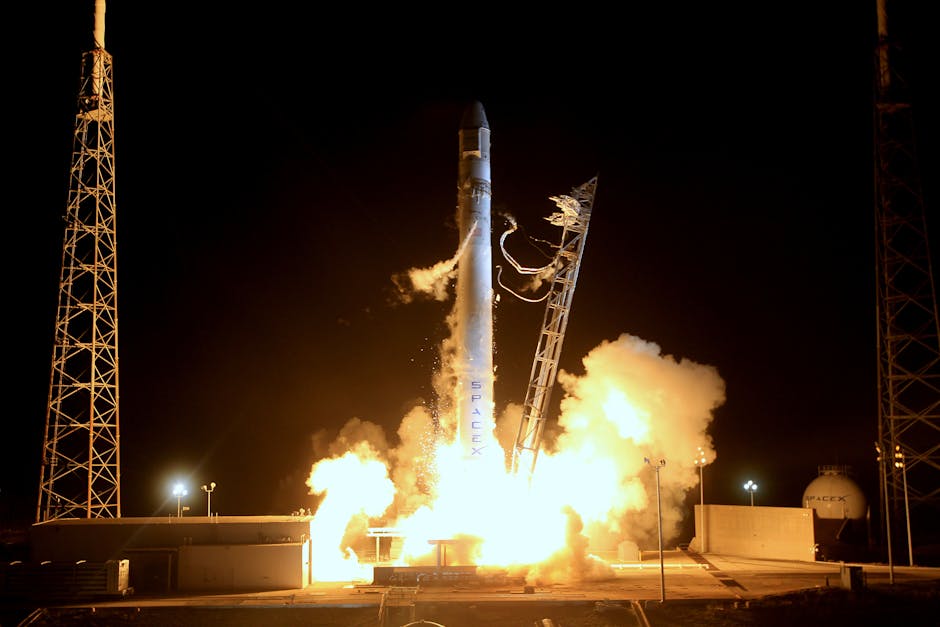In today’s rapidly evolving security landscape, the ‘U.S. Space Force strategy’ plays a pivotal role in maintaining national defense. As the Space Force celebrates its fifth anniversary, it outlines key initiatives focused on enhancing capabilities and achieving space superiority. Central to this strategic framework are insights from Chief of Space Operations Gen. Chance Saltzman, who highlights how the Space Force is positioning itself to tackle the multifaceted threats posed by global competitors like Russia and China. Understanding these strategies is critical, especially as adversaries continue to develop advanced counterspace technologies that challenge U.S. assets in orbit.
The U.S. Space Force strategy isn’t just about countering threats; it encompasses a comprehensive approach to transform the force into a formidable entity. This includes innovative technological development, organizational restructuring, and a commitment to workforce enhancement. Moreover, strategic partnerships, particularly with commercial space companies, significantly bolster the Space Force’s operational readiness. As these initiatives unfold, they’re designed not only to diversify capabilities but also to ensure the U.S. maintains its edge in space operations. In this context, the U.S. Space Force strategy proves to be a cornerstone in safeguarding national interests and securing technological advancements for the future.
We also Published
“Success is not final, failure is not fatal: it is the courage to continue that counts” – Winston Churchill
This article delves into the U.S. Space Force’s strategy as it marks its fifth anniversary, highlighting the key initiatives aimed at enhancing capabilities and ensuring space superiority. The insights provided by Chief of Space Operations Gen. Chance Saltzman are crucial to understanding the evolving landscape of military operations in space.
Problem Statement
The U.S. Space Force aims to establish a combat-ready force that can effectively counter escalating threats from global competitors such as Russia and China. This problem involves exploring the multifaceted approach taken by the Space Force, which includes organizational restructuring, development of advanced technologies, and creating international partnerships. Each aspect plays a significant role in shaping the operational readiness of the Space Force.
One of the paramount challenges is addressing the advanced counterspace capabilities developed by adversaries. Understanding how the Space Force plans to transform itself into a formidable entity amidst these threats is essential. The comprehensive strategy involves assessing existing military capabilities and identifying gaps that need to be filled for an effective response. Therefore, insights into the strategic vision underscoring these transformations illuminate how the U.S. Space Force prepares for modern space warfare.
Understanding the U.S. Space Force Strategy
Strategic Vision Overview
Chief of Space Operations Gen. Chance Saltzman has mapped out a strategic vision anchored in six fundamental “Space Force truths” that articulate the unique capabilities and challenges of the Space Force. These truths underscore the dual role of Guardians as both technical experts and warfighters, emphasizing the critical need for skilled personnel equipped to manage sophisticated space systems while also engaging actively in space conflict scenarios. This approach is vital for ensuring the protection of U.S. assets in light of growing threats.
Advanced Capability Development
The U.S. Space Force is prioritizing the development of robust and resilient space architectures as part of its strategy. Resilience is essential to withstanding the spectrum of potential attacks from adversaries. Innovations in technology are expected to enhance space-based missile warning systems and tracking capabilities, which is crucial for maintaining operational superiority. Each initiative aims to fortify defenses and ensure the U.S. can respond effectively to any onset of aggression in the space domain.
Countering Emerging Threats
Assessment of Adversary Capabilities
As the U.S. Space Force enhances its strategic focus, it becomes increasingly imperative to analyze the capabilities of rival powers, chiefly China and Russia. China’s advancement in counterspace weaponry, including ground-based lasers and satellite grappling technologies, poses significant risks to U.S. satellite infrastructure. Likewise, Russia’s testing of anti-satellite missiles and the development of nuclear-capable satellites indicate an urgent need to bolster U.S. space defenses. The U.S. must not only understand these threats but also position itself to mitigate potential risks associated with them.
Strategies for Engagement
In light of the outlined adversarial capabilities, the U.S. Space Force is strategically aligning its operations to counteract these threats effectively. By developing resilient systems and continuously improving space domain awareness, the Space Force aims to respond swiftly to emerging challenges. The strategic partnerships with commercial space companies further enhance the innovative capacities of the Space Force, enabling rapid technological advancements that are integral for effective operations in space. Consequently, the focus on building operational resilience is essential for maintaining a competitive edge.
Organizational Restructuring for Enhanced Defense
Establishment of Space Futures Command
The U.S. Space Force is currently undergoing a significant organizational restructuring that includes the formation of a new field command, the Space Futures Command. This command is specifically designed to accelerate the development and operational deployment of advanced space capabilities. Its focus on rapid prototyping and experimentation is anticipated to complement existing commands and create a more agile military force adept at addressing space-related threats. Such restructuring reflects a dedicated commitment to aligning organizational capabilities with strategic imperatives.
Focus on Adaptability
The restructuring initiative is complemented by improvements to rank structures and personnel management systems. These modifications aim to cultivate a workforce capable of agility and responsiveness to the unpredictable nature of space operations. By fostering an environment conducive to rapid innovation, the U.S. Space Force is poised to effectively navigate the complexities that come with evolving technologies and geopolitical dynamics. Such adaptability within the Space Force is crucial for maintaining operational efficacy and meeting the challenges of contemporary warfare.
Workforce Development: A Dual Focus
Training and Recruitment Initiatives
As part of its strategic vision, the U.S. Space Force acknowledges the necessity of nurturing a highly skilled workforce. This includes implementing specialized training programs that ensure Guardians possess both technical expertise and warfighting acumen. Recruitment campaigns aimed at attracting talent from fields related to science, technology, engineering, and mathematics (STEM) are underway to fortify the ranks with individuals capable of advancing the Space Force’s mission. The cultivation of this dual-skilled workforce ensures preparedness for the unique challenges posed by space operations.
Leadership and Innovation
Through the establishment of career progression pathways, the Space Force is investing in the leadership development of its personnel, which balances technical skills with opportunities for growth in military leadership roles. Such measures not only contribute to an empowered workforce but also foster a culture of innovation that is essential for keeping pace with rapidly evolving threats and technologies in the realm of space warfare. By emphasizing adaptability and expertise, the Space Force is strategically positioning itself to face the complexities of modern military operations effectively.
Final Thoughts on the U.S. Space Force Strategy
The U.S. Space Force’s strategy, as unveiled in celebrating its fifth anniversary, encompasses a comprehensive approach aimed at transforming the force into a formidable entity capable of achieving space superiority. With profound implications for national security, the emphasis on advanced capabilities, organizational restructuring, workforce development, and international collaborations signifies a thorough commitment to countering evolving threats in space.
As adversaries continue to enhance their space capabilities, the U.S. Space Force’s strategic vision becomes increasingly vital to safeguarding its interests in the space domain. It is through the execution of these strategic initiatives that the Space Force can not only protect existing assets but also ensure the development of future technologies necessary for sustained operational success in a rapidly changing environment. Ultimately, the accomplishments of the U.S. Space Force, underlined by a focused strategy, represent a critical component of maintaining U.S. hegemony in space.
Some numerical problems related to the above context for quick review and practice.
1. ###E = \frac{q^2}{4\\pi\\epsilon_0 r}###
This equation calculates the electric field due to a point charge, helping understand force interactions in electrostatics.
###E = \\\\frac{q^2}{4\\pi\\epsilon_0 r}###2. ###F = ma###
This fundamental equation defines the relationship between force, mass, and acceleration, critical in dynamics and motion analysis.
###F = ma###3. ###PV = nRT###
This ideal gas law relates pressure, volume, temperature, and moles of gas, vital for understanding gas behaviors in chemistry.
###PV = nRT###4. ###s = ut + \\\\frac{1}{2}at^2###
This kinematic equation describes displacement in motion involving initial velocity, time, and acceleration, fundamental in physics.
###s = ut + \\\\frac{1}{2}at^2###5. ###E = mc^2###
This equation illustrates the equivalence of mass and energy, a cornerstone of modern physics that explains energy release in nuclear reactions.
###E = mc^2###6. ###\lambda = \\frac{h}{mv}###
This formula connects wavelength, Planck’s constant, mass, and velocity of an object, crucial in understanding wave-particle duality in quantum mechanics.
###\lambda = \\frac{h}{mv}###7. ###x = x_0 + vt + \\\\frac{1}{2}at^2###
This equation for uniformly accelerated motion helps predict the position of moving objects over time, essential in kinematics.
###x = x_0 + vt + \\\\frac{1}{2}at^2###8. ###A = \\pi r^2###
This area formula for a circle is foundational in geometry, linking radius to area, and it’s used in various practical applications.
###A = \\pi r^2###9. ###pH = -\\log[H^+]###
This equation defines pH in terms of hydrogen ion concentration, crucial in chemistry for understanding acidity and basicity of solutions.
###pH = -\\log[H^+]###10. ###v = f\\lambda###
This wave equation relates wave speed, frequency, and wavelength, essential for studying wave phenomena such as sound and light.
###v = f\\lambda###By exploring these numerical problems, you can gain a deeper understanding of fundamental concepts in physics, chemistry, and mathematics, mirroring the strategic complexities of modern challenges like those faced by the U.S. Space Force. Each equation symbolizes critical aspects similar to the problem statement surrounding space superiority operations.
| Aspect | Details | Relevant Equation |
|---|---|---|
| Objective | Establish a combat-ready force to counter threats from global competitors like Russia and China. | N/A |
| Challenges | Address advanced counterspace capabilities and ensure operational readiness. | N/A |
| Strategic Vision | Rooted in six fundamental “Space Force truths” about capabilities and challenges. | N/A |
| Technological Development | Development of resilient space architectures to enhance missile warning systems. | ###E = \\\\frac{q^2}{4\\pi\\epsilon_0 r}### |
| Force Dynamics | Focus on training and recruiting skilled personnel for technical and warfighting roles. | ###F = ma### |
| International Collaboration | Form partnerships to innovate and maintain a competitive edge in space. | ###PV = nRT### |
| Adaptability | Restructuring for agility in operations and responsiveness to space-related threats. | ###s = ut + \\\\frac{1}{2}at^2### |
| Workforce Leadership | Focus on leadership development and creating a culture of innovation. | ###E = mc^2### |
| Final Thoughts | The strategy for the U.S. Space Force is crucial for national security and ensuring space superiority. | N/A |
The U.S. Space Force strategy is an essential framework for national and global security. By understanding its multi-faceted approach, students and interested individuals can appreciate how the Space Force intends to strengthen its capabilities in response to emerging threats. By focusing on advanced technological development, organizational adjustments, and robust partnerships with commercial entities, the U.S. Space Force is positioning itself to address the complexities of the current security landscape. These factors are critical in safeguarding U.S. interests and ensuring effective responses against adversaries like Russia and China.
Additionally, as the U.S. Space Force celebrates its progress and reflects on its strategic vision, the insights shared by leaders such as Gen. Chance Saltzman are valuable for understanding the evolving nature of warfare in orbit. The commitment to a skilled workforce, advanced operational techniques, and a culture of innovation embodies how the strategy aims not just at countermeasures but at achieving supremacy in space. This focus encapsulates an essential aspect of modernization in the armed forces, one that addresses both defense and the technological trajectory of military capabilities.
- The U.S. Space Force strategy includes partnerships with commercial space companies to enhance operational capabilities.
- Advanced capability development is critical in addressing emerging threats from global competitors.
- Organizational restructuring aims to create agility and responsiveness within the military framework.
- A trained and adaptable workforce is prioritized to meet the challenges posed by contemporary space operations.
- A trained and adaptable workforce is prioritized to meet the challenges posed by contemporary space operations.
In summary, the evolution of the U.S. Space Force strategy reflects a proactive stance in ensuring that the United States maintains a decisive edge in space operations, a necessity in today’s changing global landscape. Therefore, engagement with these strategic developments is beneficial for comprehending the broader implications of security in space.
RESOURCES
- Space Denial: A Deterrence Strategy
- USSF releases Commercial Space Strategy to increase …
- DOD Space Strategy
- New U.S. Space Force Strategy Outlines Criteria For …
- U.S. Space Forces – Space: Home
- US Space Force Unveils Commercial Space Strategy | Mike Kalil
- Exploring the U.S. Space Force: A New Era for … – All Together
- Unclassified space strategy outlines how DOD will defend …
- The Creation of a U.S. Space Force: It’s Only the End of the …
- Space Strategic Stability: Assessing U.S. Concepts …
- Department of Air Force Opens Proposed Space …






0 Comments